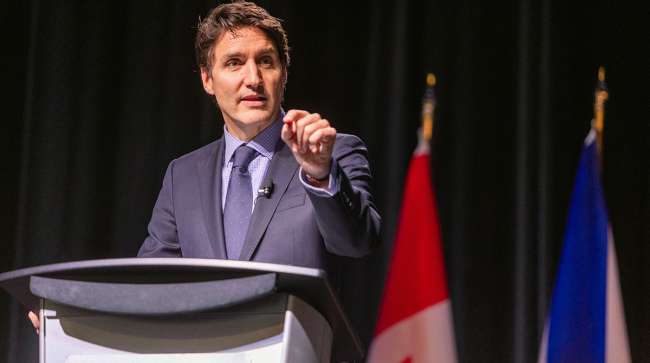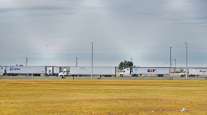Bloomberg News
Trudeau Says Canada ‘Will Respond’ if Trump Imposes Tariffs

[Stay on top of transportation news: Get TTNews in your inbox.]
Prime Minister Justin Trudeau said Canada “will respond” if U.S. President-elect Donald Trump imposes new tariffs on Canadian imports, and argued that retaliatory tariffs were successful when Trump put tariffs on Canadian steel and aluminum in 2018.
The comments Dec. 9 were Trudeau’s strongest language yet in signaling his government is preparing retaliation if Trump follows through on his threat.
Following Trudeau’s remarks, Trump repeated his jab about Canada being like a U.S. state in a post on his social media site. Canadian officials have downplayed the quip as teasing since Trump made the joke during a meal with Trudeau at his Mar-a-Lago resort on Nov. 29.
“It was a pleasure to have dinner the other night with Governor Justin Trudeau of the Great State of Canada,” Trump wrote on Truth Social. “I look forward to seeing the Governor again soon so that we may continue our in depth talks on Tariffs and Trade, the results of which will be truly spectacular for all!”
Thank you, Governor Justin Trudeau of the Great State of Canada! pic.twitter.com/wyjxp0rJMz — Trump War Room (@TrumpWarRoom) December 10, 2024
Days before the dinner, Trump said he would impose across-the-board 25% tariffs on Canadian and Mexican imports on the first day of his presidency unless both countries crack down on the flow of migrants and fentanyl into the U.S.
“Let’s not kid ourselves in any way, shape or form: 25% tariffs on everything going to the United States would be devastating for the Canadian economy,” said Trudeau, speaking to the Halifax Chamber of Commerce. But he said the tariffs would also raise costs on a wide range of goods the U.S. gets from Canada.
Canada will “respond to unfair tariffs in a number of ways, and we’re still looking at the right ways to respond, but our responses to the unfair steel and aluminum tariffs were what ended up lifting those tariffs last time,” he said.
Shortly after Trump announced the tariffs on Canadian steel and aluminum in the spring of 2018, Canada rolled out retaliatory tariffs on targeted, politically sensitive items such as “bourbon and Harley-Davidsons and playing cards and Heinz ketchup,” Trudeau said.
Happening now: Prime Minister Justin Trudeau delivers remarks at the @HalifaxChamber of Commerce and participates in a Q&A and fireside chat to discuss the federal government’s economic vision for Canada. Tune in: https://t.co/090oIAudtE pic.twitter.com/EOTLZewnoy — CanadianPM (@CanadianPM) December 9, 2024
The tariffs were “politically impactful to the president’s party and colleagues,” and that was how “we were able to punch back in a way that was actually felt by Americans,” Trudeau said.
Canadian officials have stressed that Canada is also a huge market for American businesses. “We are the biggest customer by far of U.S. exporters,” said Kirsten Hillman, Canada’s ambassador to the U.S., in a Bloomberg TV interview last week. She said 36 US states count Canada as their biggest export market.
The Canadian prime minister cautioned that Trump should be taken seriously when he threatens to impose tariffs, but said history has shown Trump can have other motivations as well. “His approach will often be to challenge people, to destabilize a negotiating partner, to offer uncertainty and even sometimes a bit of chaos into the well-established hallways of democracies and institutions,” Trudeau said.
Want more news? Listen to today's daily briefing above or go here for more info
“One of the most important things for us to do is not to freak out, not to panic,” Trudeau said, arguing Canada will need a thoughtful and united approach to reach an agreement with Trump and avoid harming both economies.
However, he said managing the trade file is likely to be more difficult in Trump’s second term, despite the fact Canada, Mexico and the U.S. renegotiated the entire North American free trade pact in 2018.
“This time’s going to be different, it’s going to be a little more challenging,” Trudeau said. Trump and his inner circle are coming in with a much “clearer set of ideas of what they want to do right away than they had last time,” he said.
But he said he believes Canada can again find a “win-win” solution that works for citizens and businesses on both sides of the border.




